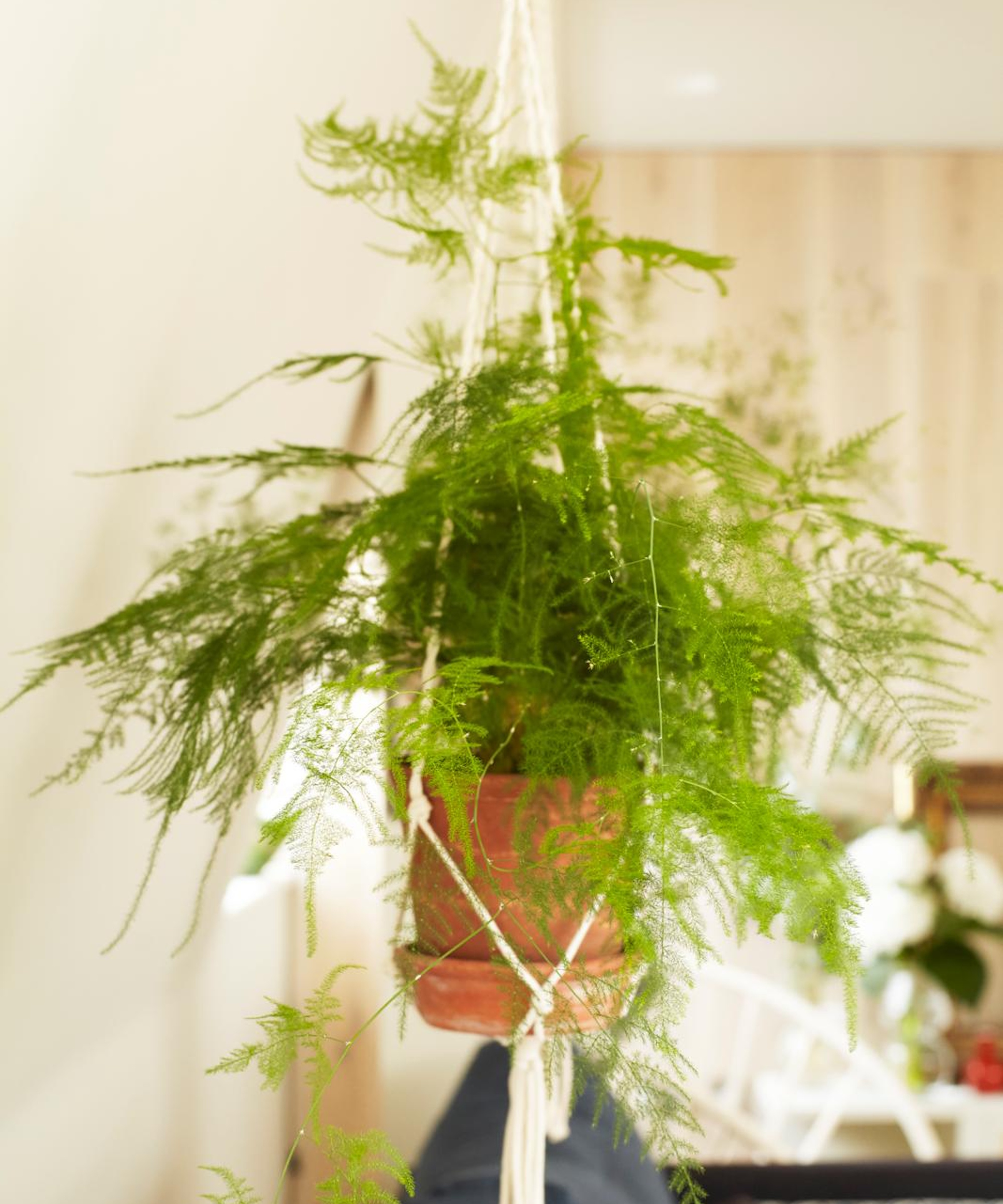How to propagate an asparagus fern – this is the only method I use and it works every time
Duplicate the soft fronds of these ferns with this easy technique


If there's one houseplant my visitors always point out, it's my asparagus fern. Its soft fronds make a magnificent display in my living room and it grew so large it started to trail like a cascading plant. That's why I decided to propagate my asparagus fern, in attempt to control the original plant's size and enjoy more of its feathery foliage elsewhere in my home.
Caring for an asparagus fern is not always as straightforward as other indoor ferns, due to its delicate foliage, and it likewise can't be easily propagated from cuttings. But I've found it's simple to propagate an asparagus fern through division, and it doesn't take a lot of time to do either.
There are a few things you need to keep in mind when doing this, however, as a few common errors can cause your propagation to fail. To help you out, I've compiled my top tips for propagating an asparagus fern successfully.

How to propagate an asparagus fern
Unlike the easiest houseplants to grow from cuttings, asparagus ferns are much easier to multiply through division. This is because they have tuberous roots that each new plant need to grow successfully. Here's how I ensured division worked for my asparagus fern:
How to divide an asparagus fern

Dividing houseplants is much the same as dividing plants in your yard. It involves splitting plants into multiple new plants, each with their own intact root system.
In my experience, asparagus ferns are quite easy to divide because they have quite obvious natural separations.
The first thing to do is lift your asparagus fern out of its pot. I find repotting my asparagus fern the perfect opportunity to divide for this reason. If your asparagus fern is turning yellow from being pot-bound, dividing and repotting will actually resolve the issue.
Design expertise in your inbox – from inspiring decorating ideas and beautiful celebrity homes to practical gardening advice and shopping round-ups.
Whenever propagating by division, I find it's easier to work with plants when you clear away the soil from roots. This is also an opportunity to prune houseplant roots that may be damaged, mushy, and rotting, as they won't serve your propagated ferns.
I like to use essential pruning tools to ensure clean cuts are made. These pruning snips from Amazon work well for an asparagus fern.
The division can then begin. Look for natural separations and gently pull apart sections of your fern, or use a tool like this garden knife from Amazon to get through tougher parts.
Each section should have its own robust root system and rhizomes, so it's important to make sure as many roots as possible are left undamaged in the process.
With the plants separated, I then pot up each new plant in its own container. The best potting soil for indoor plants like asparagus ferns is one that is well-draining, as these plants don't do well with a soggy environment.
I use this Miracle-Gro houseplant potting mix from Amazon which has perlite and other ingredients to help with moisture management.
It's then as simple as watering the asparagus ferns to help them settle into their new homes. Make sure to also position your ferns somewhere bright, but out of direct sun to avoid leaf scorch.
FAQs
What is the best time of year to propagate an asparagus fern?
The best time of year to propagate an asparagus fern is when it is actively growing. This is in the spring and summer months. Dividing your asparagus fern during the warmest time of year will help each of the new plants to settle in well and push out new growth, aiding the success of propagation.
Should you fertilize an asparagus fern after dividing?
It's best not to fertilize a divided asparagus fern immediately, but to rather wait until each propagated plant has had time to establish and settle into its new pot. During spring and summer, you can fertilize an asparagus fern with a balanced houseplant fertilizer (from Walmart). This will give your ferns a boost of essential plant nutrients and encourage new growth.
Something important to note is that you shouldn't attempt to propagate an asparagus fern more than once every two or three years. Dividing too frequently can stress the plant out, make it weaker, and lead to declining health. That's why it's important to learn when to divide plants to ensure you are successful in this propagation technique.

Tenielle is a Gardens Content Editor at Homes & Gardens. She holds a qualification in MA Magazine Journalism and has over six years of journalistic experience. Before coming to Homes & Gardens, Tenielle was in the editorial department at the Royal Horticultural Society and worked on The Garden magazine. As our in-house houseplant expert, Tenielle writes on a range of solutions to houseplant problems, as well as other 'how to' guides, inspiring garden projects, and the latest gardening news. When she isn't writing, Tenielle can be found propagating her ever-growing collection of indoor plants, helping others overcome common houseplant pests and diseases, volunteering at a local gardening club, and attending gardening workshops, like a composting masterclass.